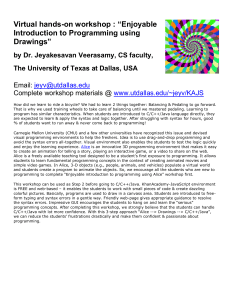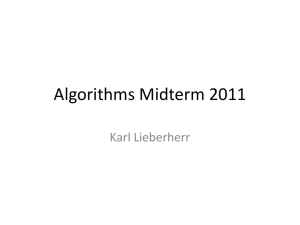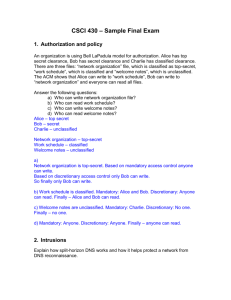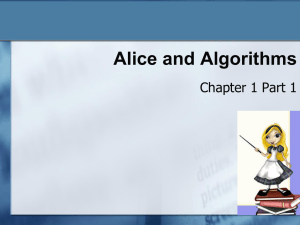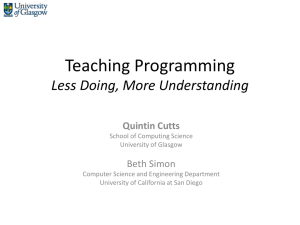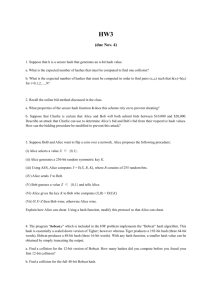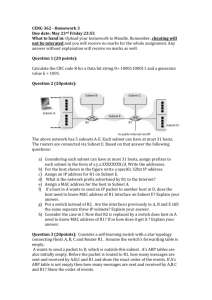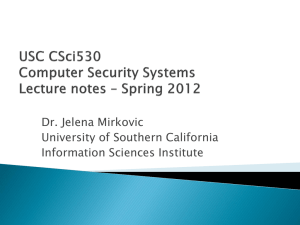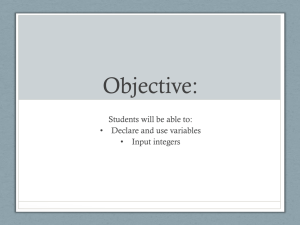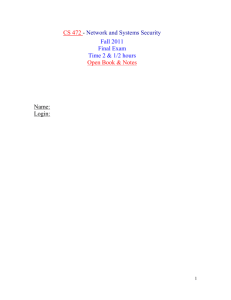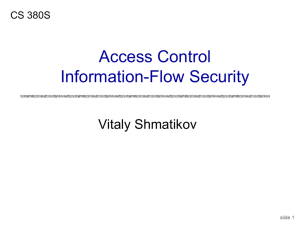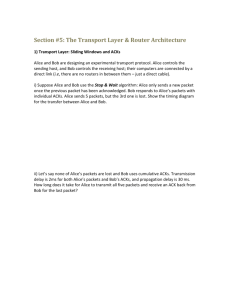Polyglot: An Extensible Compiler Framework for Java
advertisement
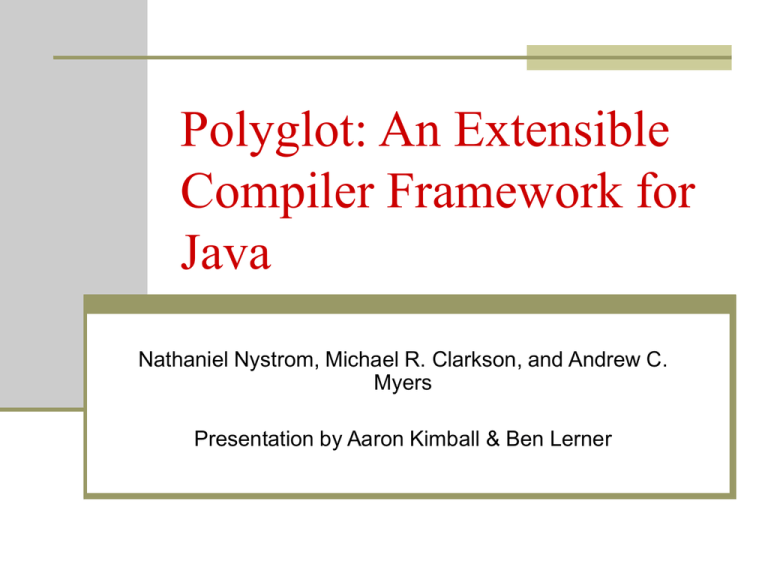
Polyglot: An Extensible
Compiler Framework for
Java
Nathaniel Nystrom, Michael R. Clarkson, and Andrew C.
Myers
Presentation by Aaron Kimball & Ben Lerner
Purpose of Polyglot
Allow easy extensions to Java language
Security
Support new language designs
Optimization, static analysis
Instructional uses
Polyglot Architecture
Polyglot base is a static checker for Java source code
Extensions add AST components and compiler passes
Size of extension code proportional to complexity of changes
Parse extended-language source code, and reduce code to Java AST
which is output as .java files
javac then compiles to final bytecode form
Grammars & Passes
“PPG” parser generator used; provides
grammar inheritance
Passes perform static analysis, type
checking, compilation steps; run in a
“scheduled” work queue
AST Rewriting is entirely functional
Example: Coffer
tracked(F) class FileReader {
FileReader(File f) [] -> [F] throws IOException[] {
... }
int read() [F] -> [F] throws IOException[F]
{ ... }
void close() [F] -> [] { ...; free this; }
}
Language includes annotations on functions to enforce
linear use of “capability keys”; “free” statement destroys
the capability key for an object
Extensions & Delegates
Simple subclassing does not
provide rich-enough object
extension; code duplication still
happens
Extension objects allow
additional methods to be
attached to a node
Delegate objects allow overriding
of existing methods using userdefined dispatch protocols
Goal is “mixin extensibility”
Additional Notes & Results
Separate compilation through serialized class
data
Qualitative measure of “code required” vs.
“departure from Java” demonstrates simple
language changes require simple compiler
changes
Many languages (PolyJ, JMatch, others)
implemented in Polyglot... Including Jif!
Untrusted Hosts and
Confidentiality: Secure
Program Partitioning
Steve Zdancewic, Lantian Zheng, Nathaniel
Nystrom, Andrew C. Meyers
Presentation by Aaron Kimball & Ben Lerner
Purpose of Program Partitioning
(PpoPP?)
Run programs securely on trusted hosts
Hard parts:
Not everyone trusts every host
Not everyone trusts each other
How to ensure security is preserved?
Technical Terms
Principal: a person, machine, or entity
Authority: a set of principals who can perform
some action
Confidentiality: data isn’t leaked to principals
who shouldn’t see it
Integrity: data isn’t modified by principals who
shouldn’t do so
Security Labels
Labels look like{o1 : r1 , r2 ,, rn ;}
Data are tagged by labels
Each owner o specifies a set of allowed
readers
A principal can read data only if all owners
permit it
More owners more restrictive policy
Confidentiality Integrity
Integrity constraints look like {?:r}
Data has no owner, but is trusted by r
Confidentiality: owner trusts readers not to do
something bad
Integrity: reader trusts owner hadn’t done
something bad
Side channels
If (b_secret) then x = true else x = false
This leaks the secret data!
Security is label is restricted at every p.c.
Example: Oblivious transfer
Variables are only
accessible by Alice
Assignment ok
because of
authority clause
Endorse lets Alice
blindly trust Bob’s
data
Declassify lets
Bob read Alice’s
data
public
int
int
bool
class OTExample {
{Alice:; ?:Alice} m1;
{Alice:; ?:Alice} m2;
{Alice:; ?:Alice} isAccessed;
int{Bob:} transfer{?:Alice} (int{Bob:} n)
where authority(Alice) {
int tmp1 = m1;
int tmp2 = m2;
if (!isAccessed) {
isAccessed = true;
if (endorse(n, {?:Alice}) == 1)
return declassify(tmp1, {Bob:});
else
return declassify(tmp2, {Bob:});
}
return 0;
} }
How to split
Each machine carries some security label
All data carries some label
“Just” split the computations such that
Label(f) <= Label(host)
Host must be at least as confidential as the
data, and have at most as much integrity as
the data
Interesting bits: ICS
Within a single host, security is easy to check
Integrity Control Stack: security across hosts
Deep stack many data dependencies
lower data integrity
less trusted data
Stack policies enforced with nonce
capabilities
Interesting bits: Label inference
Type checking extended to infer labels for all
data and constraints for all flows
…where Polyglot is useful
Future work
Adding more interesting security relations
“Alice Actsfor Bob”
Dynamically generated labels – hard to split!
…label polymorphism

